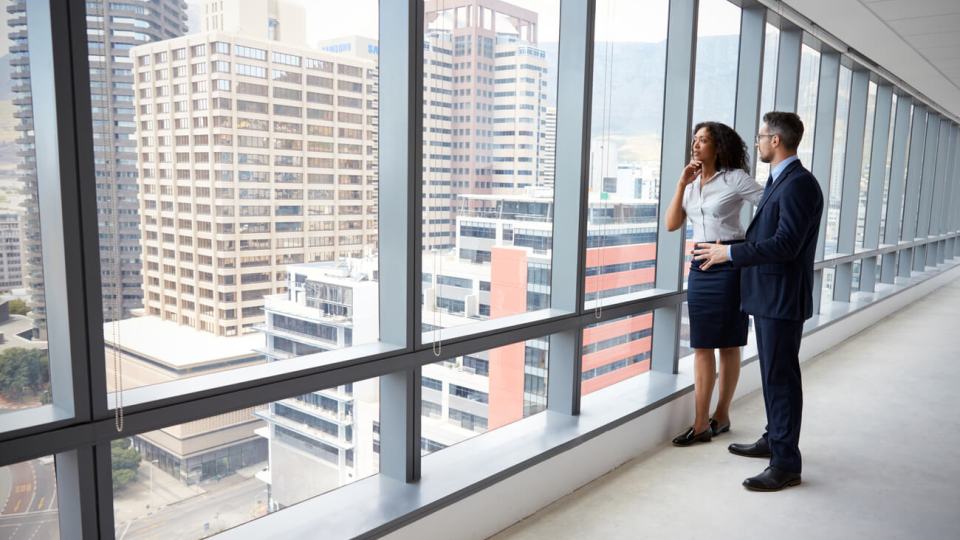How to Negotiate the Best Tenant Improvement Allowance
Commercial landlords often offer incentives to turn prospective leads into long-term tenants — especially when vacancies are on the rise — and one such incentive is the tenant improvement (TI) allowance.
Whether an office is being leased to its first tenant or was recently vacated, the next company to occupy the space will likely want to modify it to better suit its needs. Accordingly, a tenant improvement allowance is simply the amount of money that a landlord is willing to spend so that the new tenant can retrofit or renovate the office space. This is usually expressed in a per-square-foot or total dollar sum, with the amount decided upon during lease negotiations. However, to get the most out of a TI allowance, you’ll need to negotiate a sum large enough to cover planned improvements, while also maintaining control of the build-out.
How Large of a Tenant Improvement Allowance Can You Expect?
The most important aspect is to understand your company’s requirements and do the math in advance. That’s because accepting the first TI allowance that’s proposed could leave you with only enough money to cover electricity, plumbing and HVAC maintenance. So, to avoid having to pay for everything else out of pocket, research the market costs of the improvements you’ll need and consider consulting interior designers.
Next, consider how much your landlord is likely to be willing to allow. Notably, bear markets tend to favor tenants and, as a result, landlords may be more willing to give concessions. But, your value as a tenant — as well as the length of your lease and how much your build-out would raise the property’s value — will also factor into the equation.
Likewise, keep in mind that it’s not uncommon for both parties to invest money in the build-out. And, the larger your share, the more control you’ll have over the construction and improvement process.
What Does a Tenant Improvement Allowance Cover?
Landlords prefer tenant allowances to cover hard construction costs only, as these are more likely to provide the most direct increase in value for their property. Conversely, tenants may seek to include soft costs, like architect and attorney fees, as well as permit charges and other legal fees. Note that tenant improvement allowances generally don’t cover things like furnishings and moving costs, as this presents a disadvantage for landlords.
Your lease should also specify where any leftover TI allowance money goes. Specifically, landlords may look to secure the right to keep unused funds, but you may able to negotiate the right to leftover allowance funds for future improvements or other uses beyond retrofitting.
What Is a Turnkey Build-Out?
Once you’ve figured out these details, deciding who is responsible for hiring the contractor and overseeing the project can be a tricky negotiation point. Typically, the landlord will want to hire the contractor as they know the property and have likely been through the process of build-outs and retrofitting before. The landlord can also coordinate with other tenants to keep disturbances to a minimum. However, if you end up paying a larger share of the renovation work than your landlord, you could try to negotiate the right to choose a contractor yourself, thereby ensuring more control over how improvements pan out.
Alternatively, when the landlord takes complete control of the construction process and delivers the completed space to the tenant, this is called a “turnkey build-out.” In this case, tenants may worry that landlord incentives may not be in line with their best interests, as they would naturally aim to keep costs low and only work on certain value-add elements. Moreover, the landlord’s contractor may or may not be the best fit for the tenant’s build-out and the tenant would not be involved in seeking competitive bids.
Furthermore, contingency costs ostensibly protect the landlord from cost overruns in a turnkey, but these built-in cost cushions can effectively reduce the tenant improvement benefit if the landlord completes the project under budget. For example, if a landlord estimates $35 per square foot cost during the lease-signing process, but then completes the project for $29 per square foot, the tenant has lost $6 per square foot in improvements. In this case, the tenant loses out on potential improvements, while the landlord will likely be content due to the lower expenditure. Therefore, to ensure that your best interests are represented in the build-out, get a tenant broker and negotiate for a more conventional tenant improvement allowance, rather than a turnkey build-out.
Tenant-Controlled Improvements
In some cases, tenants will want to oversee the construction and renovation themselves — especially when the project is larger. Granted, this can be a handful for tenants, but it can also yield big benefits as they can select their own contractor; alter construction details to better fit budget or preferences; and upgrade materials and finishes as desired.
Some tenants and landlords may even negotiate a compromise, with both having some control over the process. For instance, the landlord might oversee the construction, but the tenant’s project manager would receive reports of progress and cost outlays, as well as be able to upgrade materials as desired. In any case, all of these details should be worked out to the satisfaction of both parties during lease negotiations before construction begins in order to ensure that the tenant ends up with a well-fitted office space.
Even when the landlord is unwilling to grant control over the upgrade, tenants can still take some steps to ensure the process is advantageous for them. For example, the tenant may ask the landlord to undergo a competitive bidding process in the tenant’s presence to find a contractor, thereby ensuring quality work for a better price. Tenants could also find out in advance what overhead costs and administrative fees construction may entail and include them in the negotiation process. And, to ensure they’re content with the final product, tenants may also formalize the necessary work and required materials through a work letter.
Other Details to Keep in Mind when Negotiating a Tenant Allowance
When negotiating construction details, liability for delays and cost overruns can go either to the tenant or the landlord. And, because delays could cause tenants to incur holdover costs and delay office set-ups, accountability for delays will likely go to the tenant or landlord based on who has more control over the build-up.
The date of first rent paid can also be a contentious negotiation point, as landlords will expect rent as soon as the architect declares the space to be ready. Conversely, tenants will want to wait to write the first check until they’re moved in and operational. Either way, ensure you address this point in the lease terms.
The tenant improvement allowance is an outstanding benefit, and you should be prepared to negotiate convincingly to obtain one. As a tenant, you might consider a TI as an additional concession from your landlord to help you prepare the new space, whereas the landlord might see it as a capital improvement expense. In reality, the truth is likely somewhere in the middle, as a tenant improvement allowance can benefit both parties — if the terms are compared carefully and amicably.











